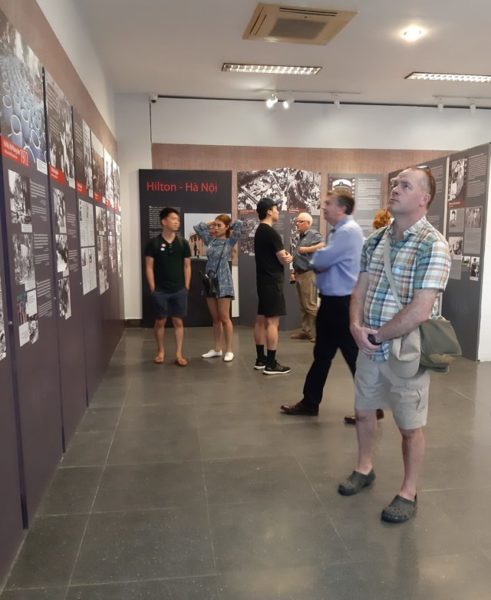
Part of the life of the people of Hanoi during the destructive war days of the US military in 1972; images of American pilots during their detention at “Hilton – Hanoi”; and Efforts to overcome the war consequences of the two peoples of Vietnam and the United States have been recreated in 4 topics: Facing B52, Hilton – Hnoi, Coming back home and Building the future.
During the 12-days and nights of “facing B52” in December 1972, bombs rained down on the capital Ha Noi and Hai Phong city, shaking the ground, breaking roof tiles and crushing bricks. But with their enormous love and unshakeable faith, soldiers and civilians in Ha Noi and Hai Phong were determined to cling tightly to their land, their home and every single trench to “make every neighbourhood a fortress, and turn every citizen into a soldier.” Looking back to those days in Ha Noi and Hai Phong, there clearly existed a belief in a final victory though people were experiencing pain, sorrow and loss. It was the enormous love and devotion that wove an epic that overwhelmed the sounds of bomb.
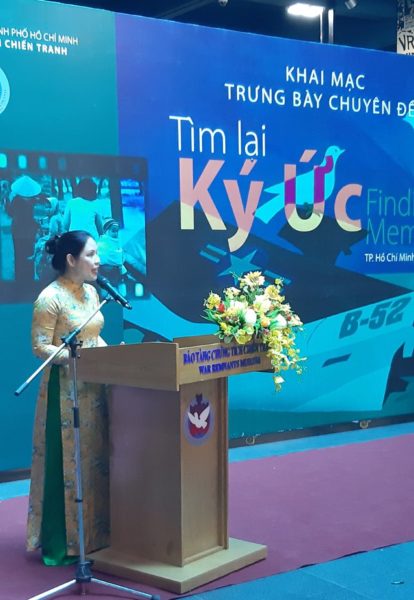
Ms. Nguyen Thi Bich Thuy – Head of Hoa Lo Prison Historical Relic Management Board spoke at the opening ceremony.
Between 1964 and 1973, a part of Hoa Lo Prison was used to detain American pilots, most of whom took part in an air raid known in Viet Nam as “Dien Bien Phu in the air”. For the captured American pilots, daily life played out behind the concrete walls of the “Ha Noi – Hilton”. Their B-52 aircraft and carpet bombings were things of the past, and they were now contemplating their past experiences and the humane treatment they received at Hoa Lo Prison. 44 years after leaving the “Ha Noi – Hilton”, Lt. Col. Edison W. Miller, 87, said: “I did not have any problem. I knew that your country was still poor and I usually had vegetable soup in the morning. In the afternoon, I was not surprised to receive a bowl of soup. One time, a Vietnamese officer talked to me and I asked if they could add some spices to the soup to make it tastier… and I felt great when they did it… I was also very surprised when they gave each of us three cigarettes a day. Every morning, four people came to give us cigarettes and I liked the time when I smoked… I used to tell everyone I knew in the prison to do exercises, and I too exercised every day.”
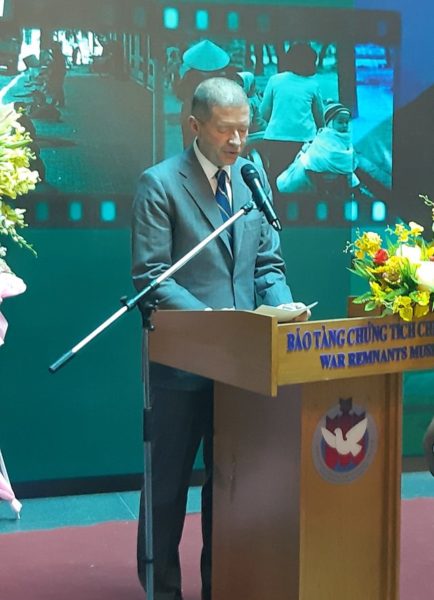
Mr. Thomas Eugene Wilber – son of Lt. Col. Walter Eugene Wilber, former US pilot detained in Hoa Lo Prison 1968-1973 is speaking.
The Agreement on Ending the War and Restoring Peace in Viet Nam was signed in Paris on January 27, 1973. Both the Vietnamese and U.S. governments released their detainees. Their happy and teary faces when returning to their families became unfading memories. Every photo and object in the “Coming back home” section tells a moving story about love between spouses or parental love after several years of separation for Vietnamese political prisoners who were released by the U.S. and South Viet Nam administrations at Quang Tri Province’s Thach Han River and for American pilots at Ha Noi’s Gia Lam Airport.
“Building the future” brings the exhibition to a close by expressing Vietnamese aspirations for peace because the nation understands the value of peace better than anyone else. Today, American veterans return to Viet Nam to reclaim indelible memories of their military life and Hoa Lo is part of those memories. All these activities are aimed at cultivating good relations between Viet Nam and America.
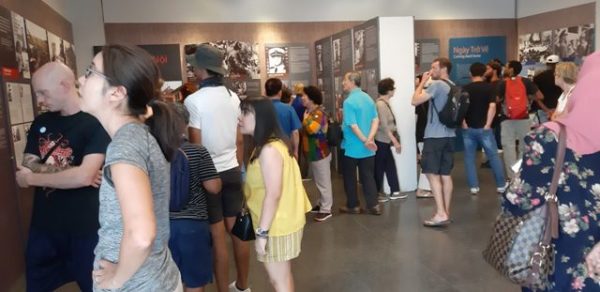
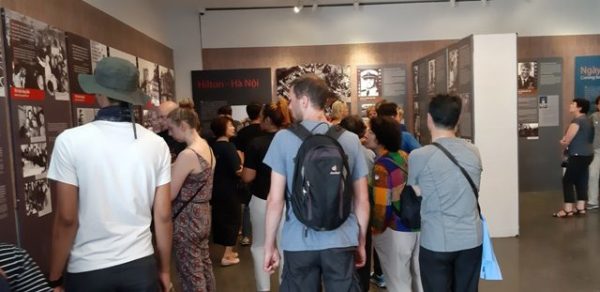
At the opening ceremony, Hoa Lo Prison Monuments Management Board also introduced to the public publications associated with display contents, photo books “Finding memories”, with images, documents and true stories of North Vietnam in two destructive wars of the US Air Force and the Navy Force through live interviews from historical witnesses and war correspondents.
After nearly 50 years, the Vietnamese people still have a good affection for Americans who love peace. The exhibition of “Finding memories” is an opportunity to feel a sense of pride in their accomplishments in the 20th century and the chance to recall their incarceration period, and enables each of us to learn more about the brutality of war and contribute to the efforts to build a peaceful world.
Hoa An

